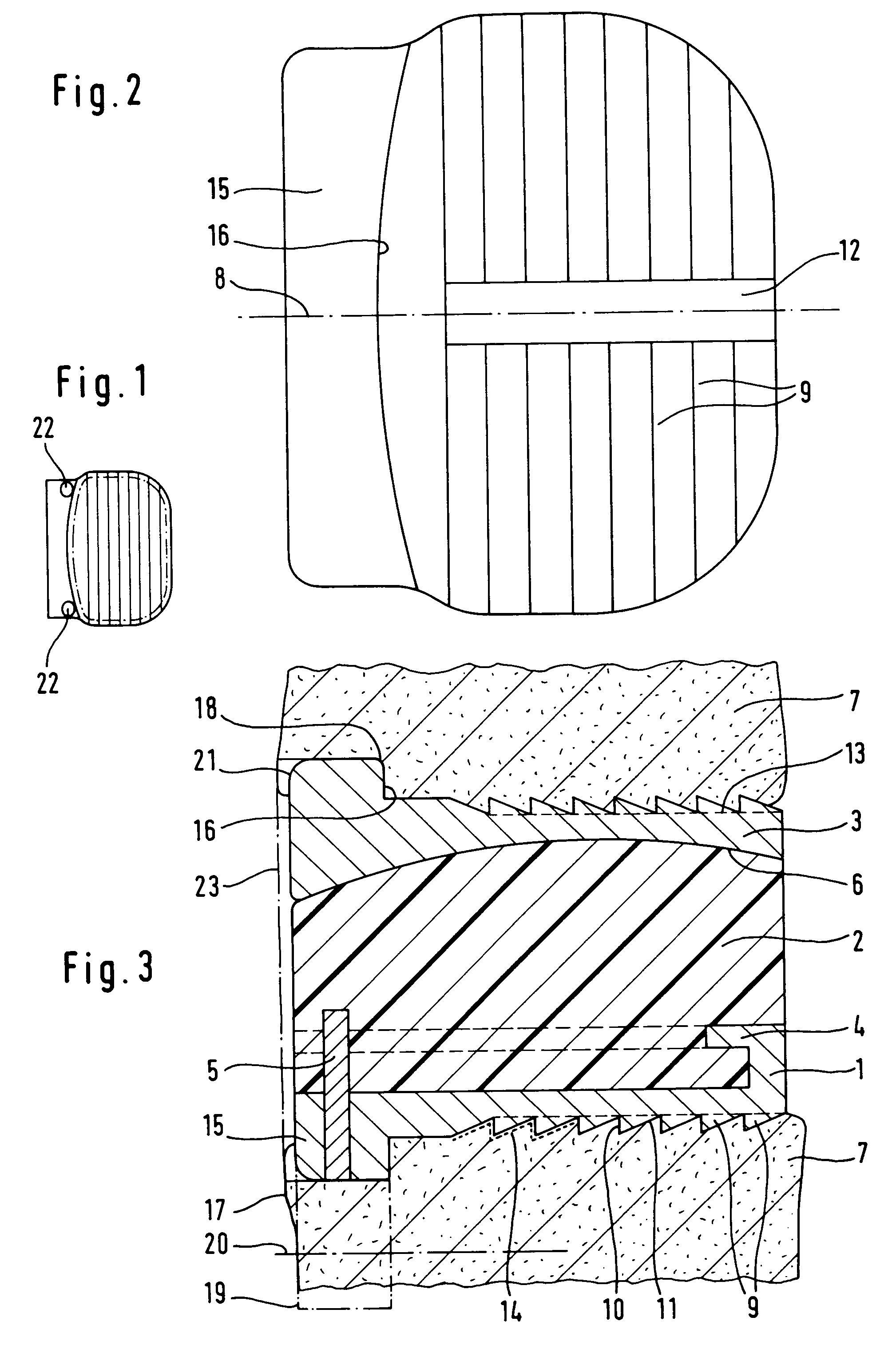Cervical intervertebral prosthesis
a cervical vertebral and prosthesis technology, applied in the field of cervical vertebral prosthesis, can solve the problems of undesirable relative movement, and achieve the effect of preventing undesired transverse movement and minimizing the potential for irritation of adjacent organs
- Summary
- Abstract
- Description
- Claims
- Application Information
AI Technical Summary
Benefits of technology
Problems solved by technology
Method used
Image
Examples
Embodiment Construction
[0016]The prosthesis comprises a lower cover plate 1 of hard, resistant material, in particular metal, a prosthesis core 2 made of polyethylene or other plastic which has good sliding properties, and an upper cover plate 3 which is made of the same material as the lower cover plate 1. The prosthesis core 2 is connected to the lower cover plate 1 firmly, albeit also detachably. The connection is effected by undercut ledges 4 on the dorsal side and both lateral sides of the lower cover plate 1, into which the prosthesis core 2 provided with complementary grooves can be pushed. In the pushed-in position, it is secured by a bolt 5. The prosthesis core 2 and the upper cover plate 3 form interacting, complementary, preferably spherical slide surfaces 6.
[0017]Those surfaces of the cover plates 1 and 3 each facing the associated vertebral body 7 are designed the same. The greater part of their surface is covered by a multiplicity of teeth 9 which are of serrated design, namely with a steep ...
PUM
 Login to View More
Login to View More Abstract
Description
Claims
Application Information
 Login to View More
Login to View More - R&D
- Intellectual Property
- Life Sciences
- Materials
- Tech Scout
- Unparalleled Data Quality
- Higher Quality Content
- 60% Fewer Hallucinations
Browse by: Latest US Patents, China's latest patents, Technical Efficacy Thesaurus, Application Domain, Technology Topic, Popular Technical Reports.
© 2025 PatSnap. All rights reserved.Legal|Privacy policy|Modern Slavery Act Transparency Statement|Sitemap|About US| Contact US: help@patsnap.com


